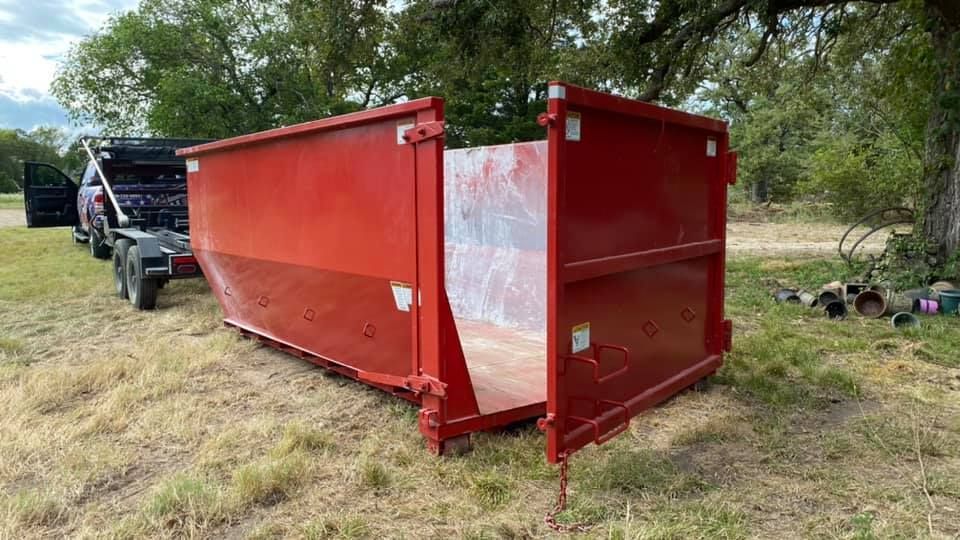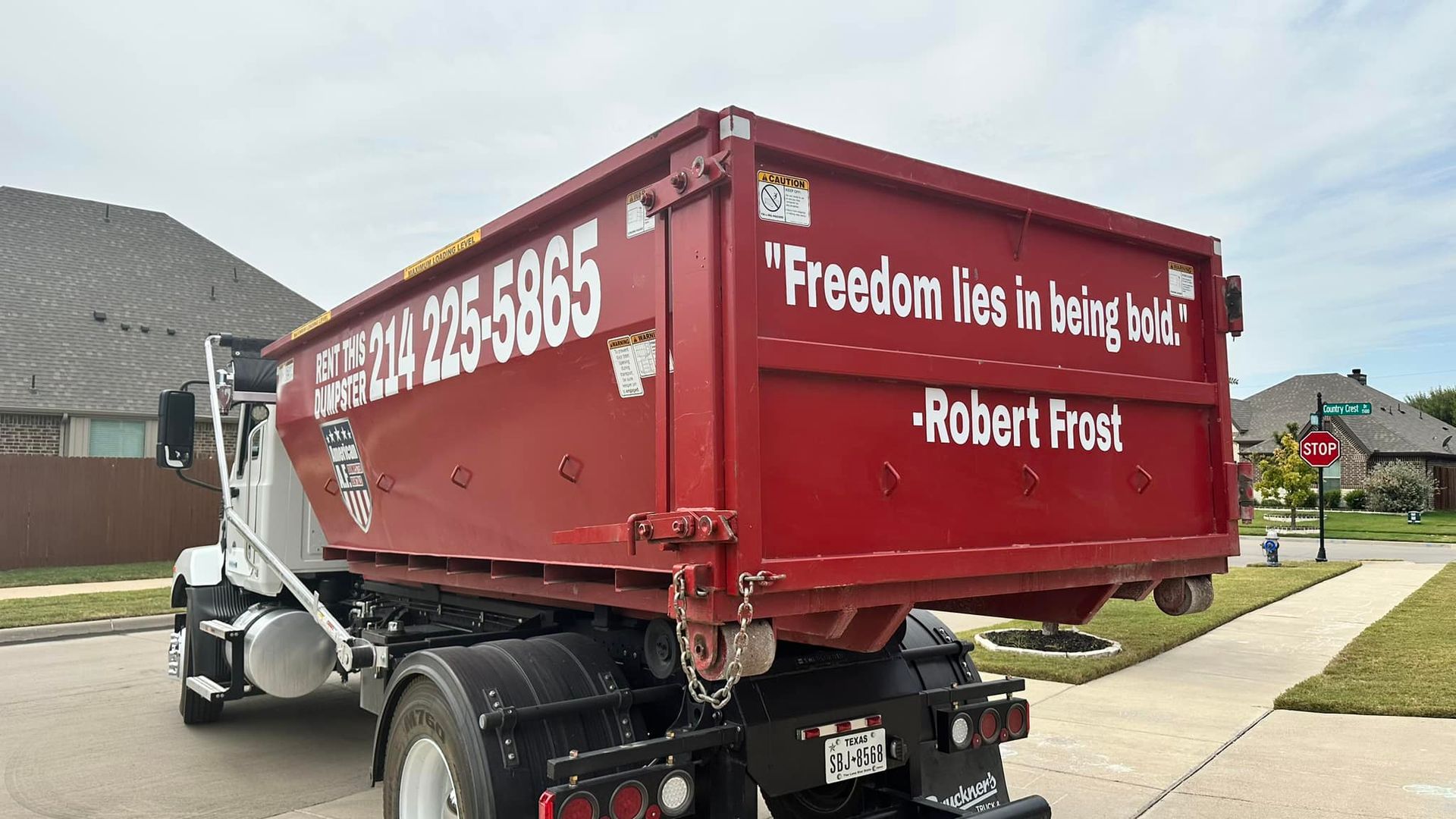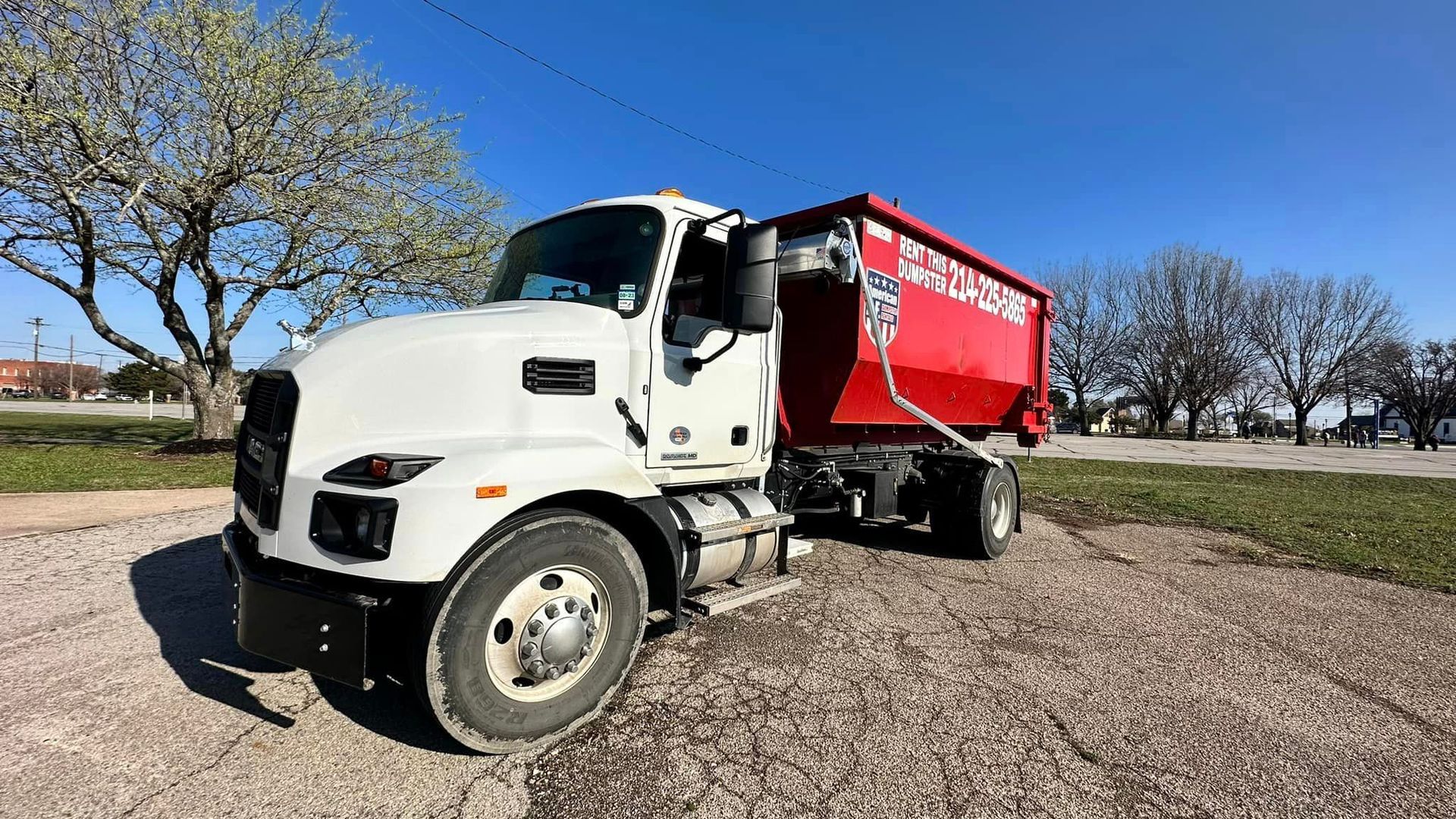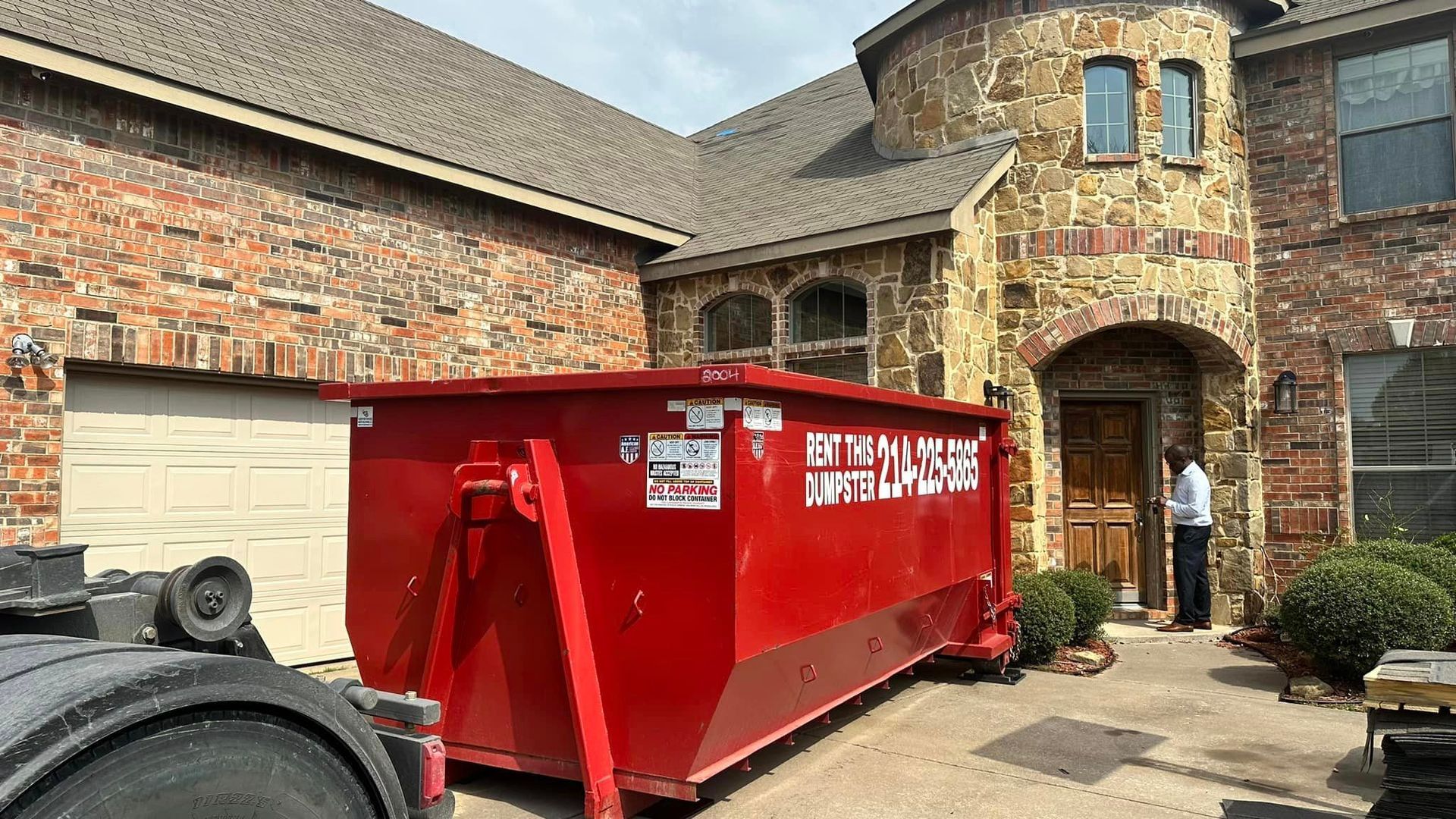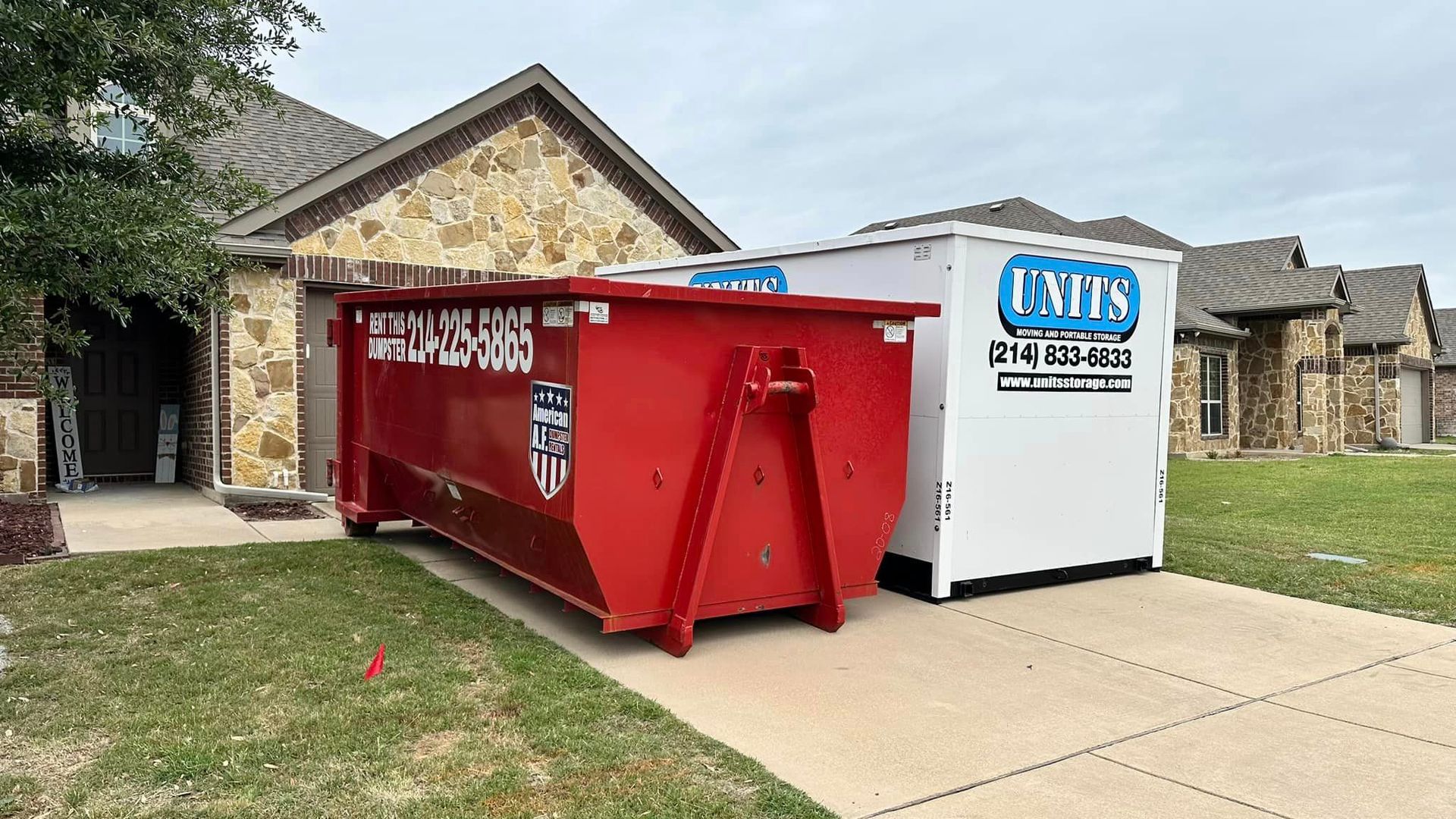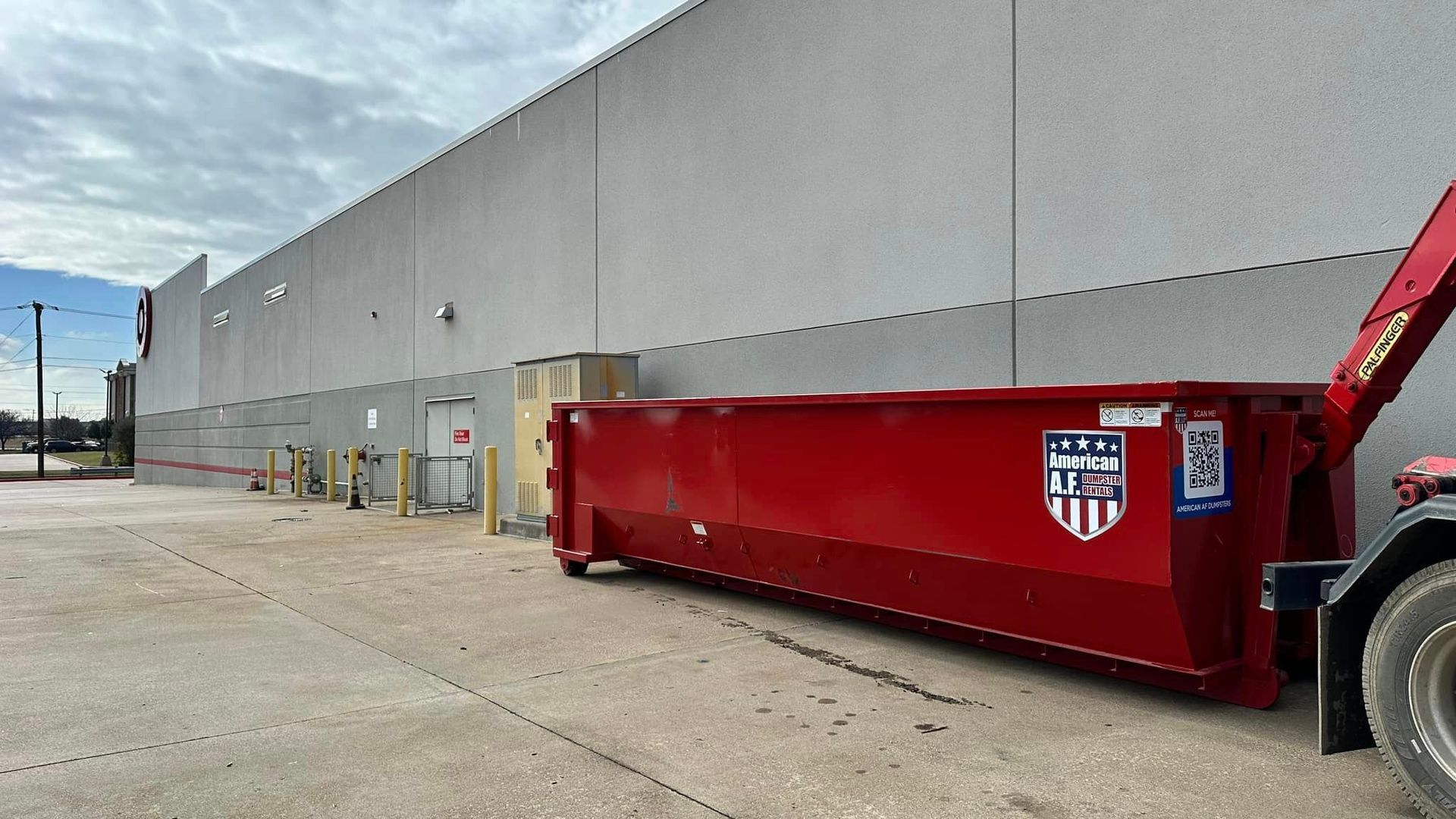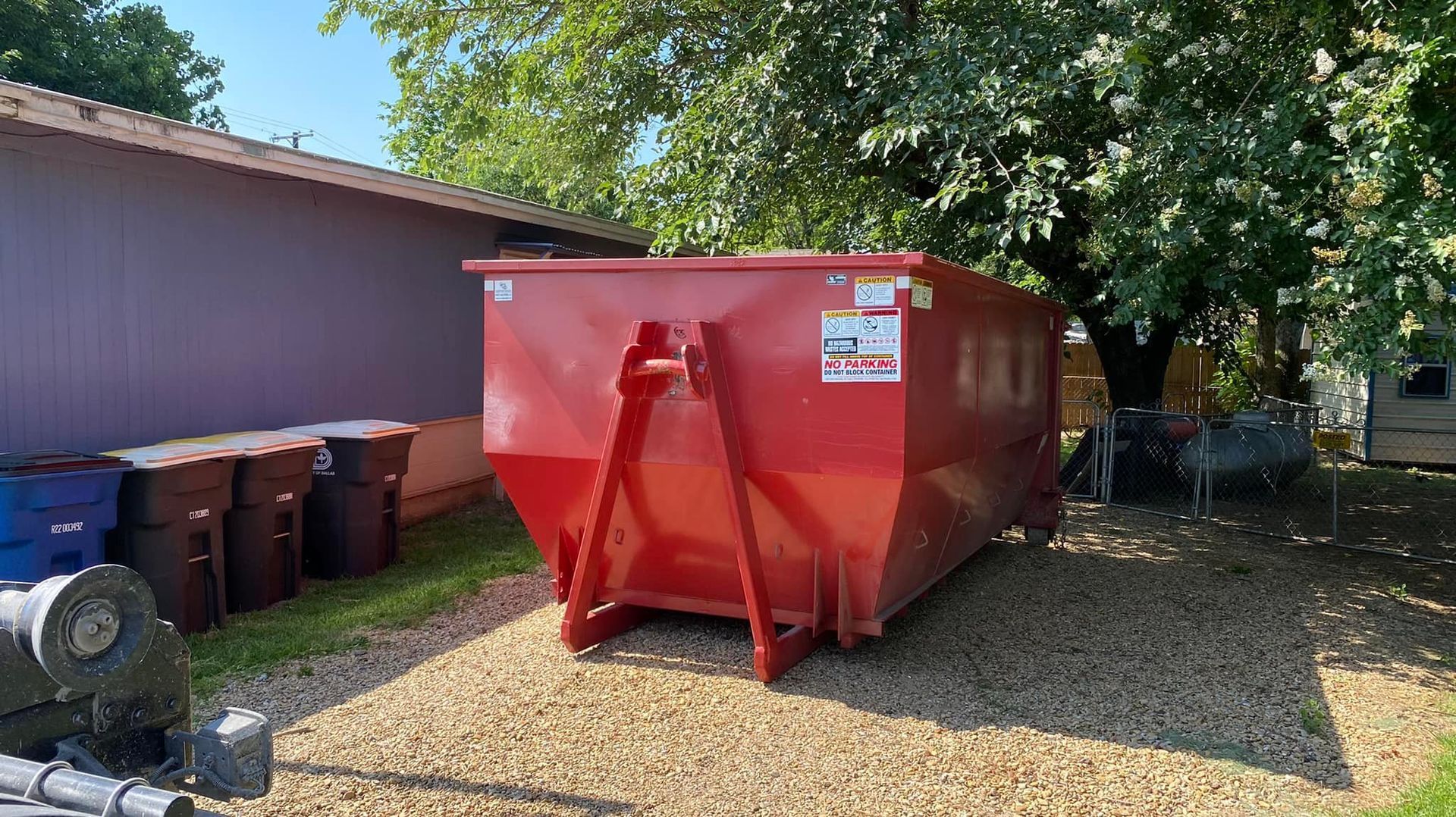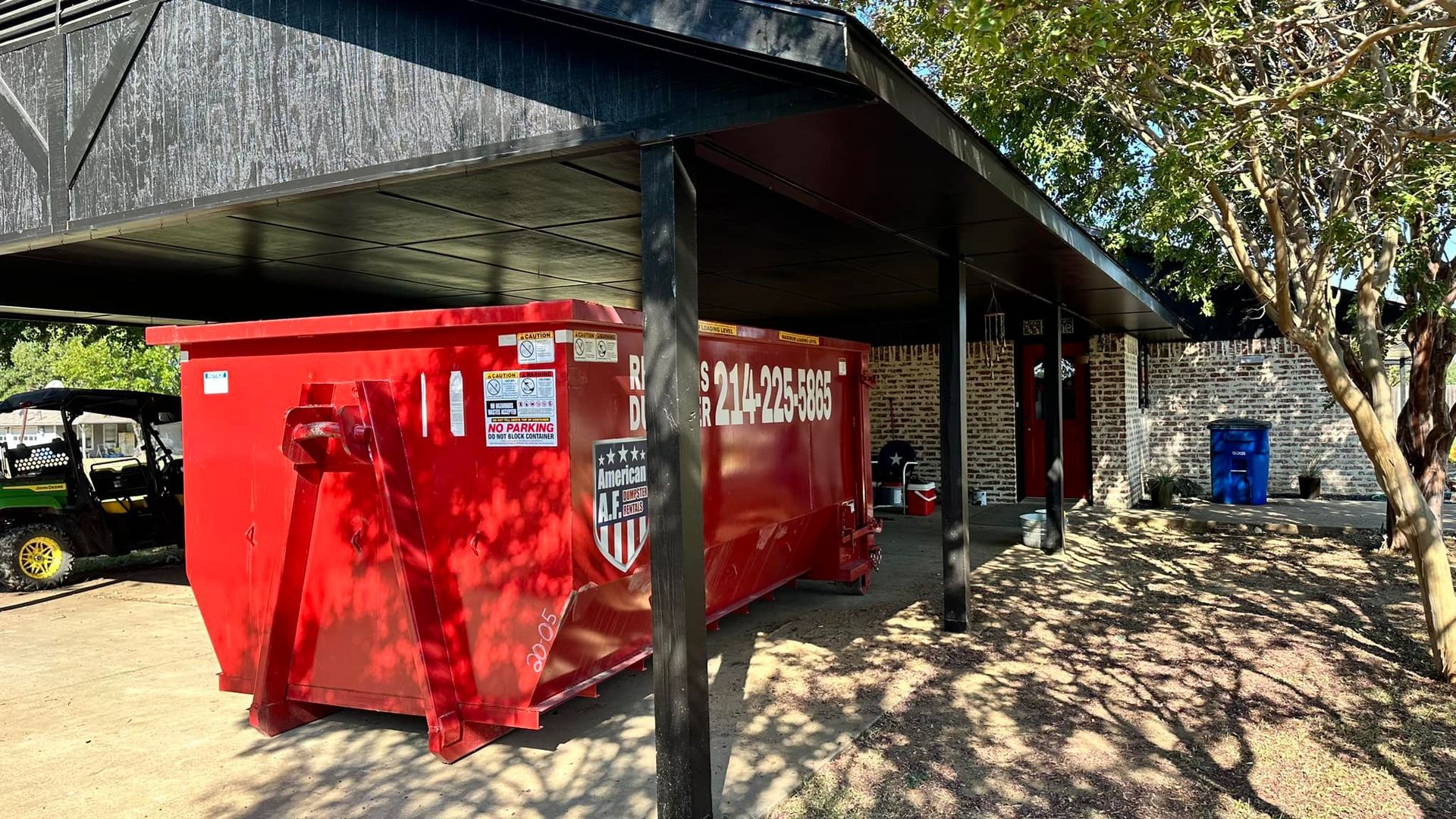How To Load A Dumpster: Expert Tips and Strategies For 2024
Ten Tips on How to Load a Roll-Off Dumpster
Effectively loading a dumpster is crucial for maximizing its usage and ensuring safety. Here are expanded tips:
- Start with the Heaviest Items:
First thing first, place heavy items like big pieces of concrete or metal at the bottom of the dumpster. This creates a stable base, reducing the chance of shifting during transportation. A lot of things can go wrong if you don't start with properly loading these bigger items first. If you're throwing away a lot of concrete, consider choosing a construction dumpster. Construction dumpsters are cubic yard roll-off dumpsters that are sometimes designed specifically for concrete disposal.
- Layer Large and Bulky Items Next:
After the first step of loading heavy materials, the next step is to strategically place bulky items such as old furniture or large household items. This helps in using the available space more efficiently.
- Break Down Cardboard Boxes:
Using a box cutter, flatten cardboard boxes to save space. This allows you to fit more into your dumpster, making it especially useful for projects with a lot of packaging waste.
- Distribute Weight Evenly:
Balance the weight across the dumpster. Uneven weight distribution can lead to safety issues during transportation.
- Fill Empty Spaces with Smaller Items:
This tip is of much use! After placing larger items, use smaller debris to fill gaps. This ensures that every cubic foot of the dumpster is used effectively.
- Place Items Strategically:
Organize your loading from one end to the other. This systematic approach can make unloading at local landfills easier and more efficient.
- Disassemble Larger Items into Smaller Pieces:
For items like furniture, breaking them down can save significant space. This is particularly important in a smaller dumpster where space is at a premium.
- Respect the Fill Line:
Overloading can lead to extra charges and is a safety hazard. Most dumpsters have a fill line indicating the maximum safe loading level.
- Avoid Hazardous Materials:
Keep out flammable liquids, toxic chemicals, and other hazardous materials. These items require special disposal methods and are not suitable for standard rental services and their dumpsters.
- Consult with Dumpster Rental Company:
Leverage the expertise of your dumpster rental company. They can provide valuable advice on the best practices for your specific needs and may offer services like a live load dumpster for quick loading and unloading.
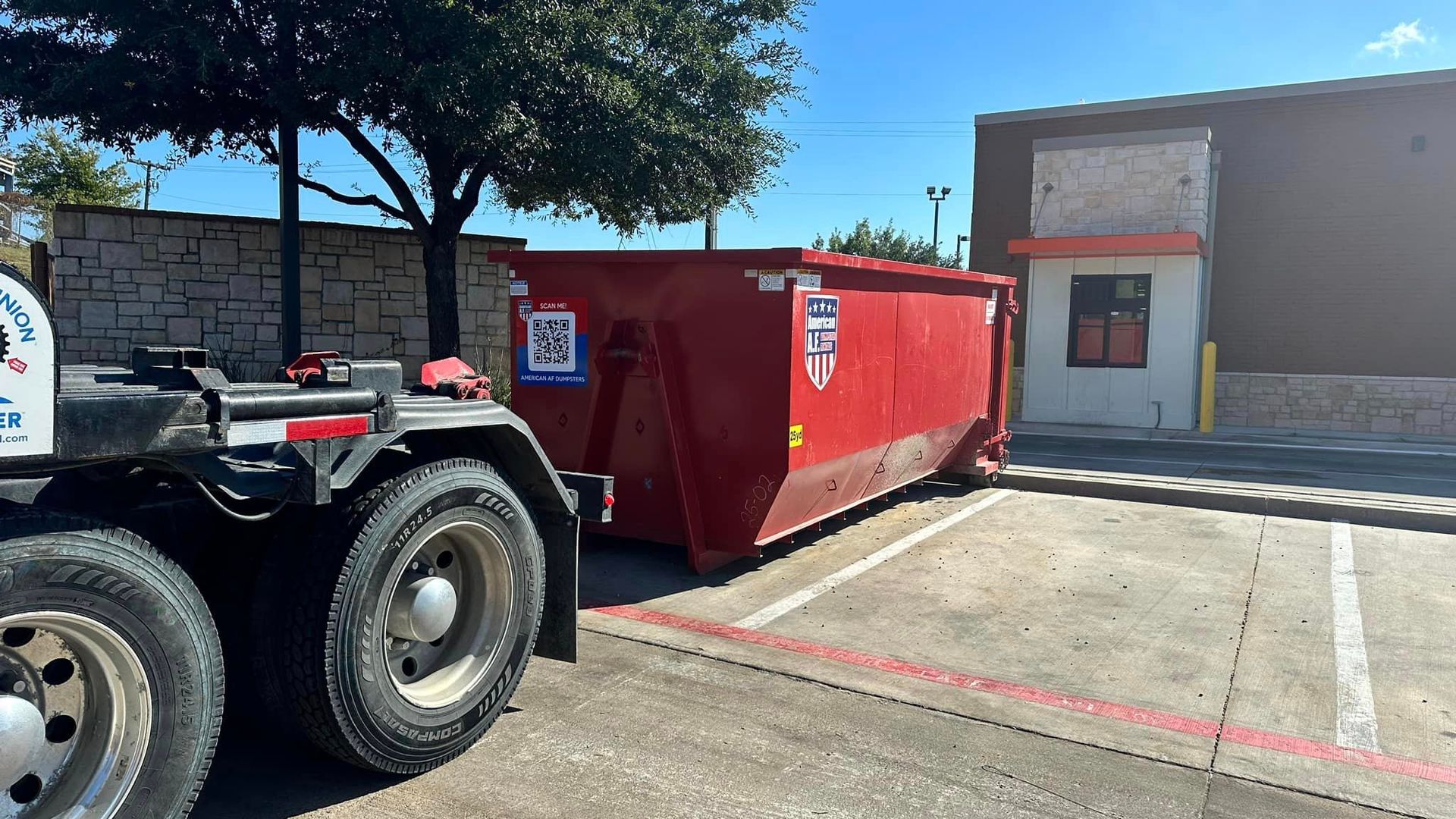
NEED A DUMPSTER?
Placing the Dumpster in the Right Location
The location of your dumpster is pivotal for efficient loading and safety. Ensure the chosen spot is on stable ground and accessible for heavy loading. Avoid areas where the dumpster might block traffic or violate local ordinances. Consider the distance from the site of waste generation (like a construction site) to minimize the effort required to transport debris. Also, ensure that the location allows enough room for the dumpster's rear doors to open fully, facilitating easier loading.
To avoid time delays and potential fees, learn more about where to place your dumpster rental by reading this article ‘Dumpster Permits 101’.
Preparing to Load the Dumpster Efficiently
Preparation is key to efficient dumpster loading. Start by sorting your items into categories like metal, wood, and yard waste. This not only makes loading more organized but also simplifies recycling. Use tools like box cutters and saws to break down larger items. Remove any hazardous materials like batteries or paints, which may require special disposal methods. Preparing bulky items beforehand, like dismantling furniture or cutting up large branches, can significantly increase the amount of waste you can fit in the dumpster.
Maximizing Dumpster Space for Efficient Use
To fully utilize the space in your dumpster, layer your items thoughtfully. Start with flat items like plywood or paneling at the bottom. Then, add bulky items, filling the gaps with smaller debris. This method reduces dead space and allows you to fit more into the dumpster. Also, consider the shape and size of items; sometimes, rotating or flipping an item can make it fit better and use less space.
Your Guide to Loading a Dumpster
A Comprehensive Step-by-Step Approach
Maximizing the potential of your dumpster involves a thoughtful and strategic loading process:
- Initiate with the Heaviest Items:
Positioning items such as concrete, metal, or heavy furniture at the bottom forms a solid and secure base. This initial layer is crucial for preventing shifting during transport and providing a firm foundation for subsequent layers.
- Layer Medium-Weight Items Next:
Following the heavy base, add medium-weight items like smaller appliances, wood, or denser yard waste. This step is essential in creating a balanced load, distributing the weight evenly, and preventing the crushing of lighter materials.
- Top Off with Lighter Materials:
Small items like clothing, plastic, or lighter wooden pieces come last. These materials can be compressed, allowing you to optimize the space. This layer acts as a cushion, absorbing any potential movement from the layers below.
- Vigilant Gap Checking:
As you load, it is always a good idea to continuously look for and fill empty spaces. This might include using bagged garbage, fabric, or foam to fill voids. This practice ensures you utilize every inch of space, making your dumpster rental more cost-effective.
For more tips on how to maximize your dumpster space to get the most bang for your buck, check out this helpful article, ‘How to Efficiently Load a Residential Friendly Roll-Off Dumpster: 10 Steps for Success!’
Condense Items for Optimal Fit
Reducing the size of large items like furniture or tree limbs is essential. Techniques like disassembling bed frames, breaking down shelving units, or sawing through large branches can drastically minimize the volume these items occupy. This practice is not just about saving space; it also makes the loading process safer and more manageable, especially when working with limited dumpster sizes or handling substantial quantities of bulky waste.
Utilizing the Open Door for Efficient Loading
Engaging the rear doors of the dumpster transforms the loading process. It allows for methodical placement of heavy and bulky items, reducing strain and risk of injury. This access point is particularly advantageous for organizing the load, as you can walk in larger items and position them precisely, ensuring a balanced and secure load.
Bottom Loading Strategy with Heaviest Items
Prioritizing the heaviest items at the bottom is more than just a space-saving tactic; it's a safety measure. It prevents the lighter, potentially recyclable materials from being damaged and maintains the dumpster's stability during transit.
Ensuring Even Weight Distribution
Strategic placement of items is vital for maintaining the dumpster's balance. Uneven loads can pose significant hazards during transportation. The goal is to distribute weight uniformly across the dumpster's base, avoiding any tilting or shifting risks.
Efficient Space Utilization by Filling Gaps
Maximize every cubic yard of your dumpster by filling in gaps with smaller items and loose debris. This method not only allows you to dispose of more waste but also secures the load, reducing movement during transport.
Adhering to Capacity Limits to Avoid Overloading
Staying within the dumpster's weight limit and fill line is critical. Exceeding these limits can lead to legal issues, additional fees, and safety hazards. Regularly assess the load, especially when disposing of dense materials like dirt or concrete. If in doubt, consult your dumpster rental company for advice or consider upgrading to a larger size.
Selecting the Right Dumpster Size for Your Project
The efficiency of your project hinges on selecting an appropriate dumpster size. For a smaller clean-up or minor home renovation, a 15-yard dumpster may suffice. Big projects, such as a major home renovation or construction work, often require a 30-yard or 40-yard rolloff dumpsters. When uncertain, opting for a larger size can be more economical and offer plenty of space rather than renting a second dumpster later. It’s a balance of estimating your project's waste output and the available space for the rolloff dumpster especially working with large amounts of junk.
To ensure you get the best dumpster rental for the job, do yourself a favor and read this blog on the different types of dumpsters and what they’re made for, ‘The Different Types of Dumpster Styles’.
Prioritizing Safety in the Loading Process
Safety is the foremost concern when loading a dumpster. This involves wearing appropriate protective gear, being mindful of sharp or dangerous objects, and ensuring the loading area is free of obstacles or hazards. One of the most important things you can do is to educate all participants on safe loading practices to prevent accidents.
Strategic Planning for Large Item Disposal
Handling large items requires a well-thought-out strategy. Evaluate the best way to move and place bulky items like appliances or large pieces of furniture. Tools like dollies or hand trucks can be invaluable, and enlisting additional help can make the process smoother and safer.
Effective Loading from the Rear to the Front
Starting your loading process from the back end of the dumpster and progressively moving towards the front ensures better organization. This approach allows you to systematically fill the dumpster, making it easier to fit more items and maintain a balanced load.
Recognizing and Adhering to Load Limits
Awareness of the dumpster's weight limit is crucial. Exceeding this limit can be unsafe and costly. If your project involves heavy materials, communicate with your dumpster rental company to ensure you have the right dumpster type to accommodate the weight. Understanding these limits is integral to planning your project and avoiding unforeseen complications.
Maximizing Efficiency and Safety
Selecting the Right Dumpster Size
- Assess Your Project's Needs:
Choose between smaller sizes like 15-yard dumpsters for minor tasks or a larger roll-away dumpster for substantial projects.
- Consult with Professionals:
Engage with experienced dumpster rental companies for valuable advice, helpful tips, and a free quote to ensure you get the best value.
Strategic Loading Approach
- Start with Heavier Items:
Place heavy debris and the bulkiest items at the bottom or closed end of the dumpster.
- Layer Appropriately:
Follow up with smaller and lighter items, filling up the open space.
- Mind the Top of Your Dumpster:
Utilize the full height but avoid overloading above the fill line near the top of the dumpster. While that may seem like common sense it is crucial for the safety of your budget and everybody on the job.
Handling Hazardous and Sharp Materials
- Exercise Caution:
Be especially careful with sharp objects or hazardous waste like shards of glass.
- Prioritize Safety:
Protect yourself and ensure safe handling of the bin by the dumpster rental company.
Efficient Space Utilization
- Make Use of Every Inch:
Include smaller debris and loose items, taking advantage of the entire available space, including the side walls of the dumpster. The side wall of the dumpster, especially in a big dumpster rental, should be used to a maximum.
- Even Weight Distribution:
Ensure balance in the load, particularly important in front load dumpsters or smaller bins.
Accommodating Heavy Objects
- Consider Access and Placement:
Ensure there's enough space for the dumpster, especially for heavy objects loading.
- Opt for Live Load Dumpsters:
These are beneficial for quick loading in constrained areas, like a parking lot.
Final Considerations For ‘How To Load A Dumpster’
As we wrap up our comprehensive guide on maximizing the efficiency and safety of your dumpster use, let's highlight some key final considerations:
Understand the Importance of Safety and Practicality
- Prioritize Safety Always:
Throughout the dumpster rental process, from choosing the right size to loading it up, always keep safety at the forefront. This means not only personal safety while loading but also ensuring the safe transport and handling of the dumpster.
- Practical Approach:
Consider practical aspects such as the location for placing the dumpster, ease of access for loading heavy objects, and the type of waste being disposed of. A practical approach ensures the process is not just safe, but also smooth and hassle-free.
Leverage Experience
- Seek Expertise:
Don't hesitate to tap into the wealth of knowledge that dumpster consultants bring. These professionals, with their years of experience, can offer tailored advice and solutions, making sure you choose the right dumpster and follow the best practices for your specific project, be it a small home cleanout or a large-scale construction job.
- Benefit from Customized Solutions:
Every project is unique, and dumpster consultants understand this. They can guide you in selecting the perfect dumpster size, the best spot for placement, and the most efficient loading strategy, all customized to your project's specific needs.
Ensure Cost-Effective Waste Management
- Adhere to Guidelines:
Following the guidelines laid out in this blog will not only enhance the efficiency of your dumpster usage but also contribute to more cost-effective waste management. By maximizing space, avoiding overloading, and ensuring safe practices, you minimize the risk of incurring extra fees or facing logistical challenges.
- Maximize Rental Value:
Ultimately, by adhering to these best practices, you ensure that you get the most value out of your dumpster rental. Efficient use of space and mindful loading practices mean you can dispose of more waste in a single rental, potentially reducing the need for additional rental dumpsters and keeping your project on budget.
By keeping these final considerations in mind, you're set to handle your waste disposal needs in the most efficient, safe, and cost-effective manner possible.
FAQS

